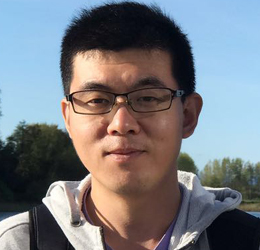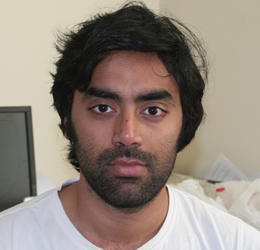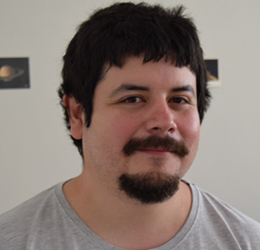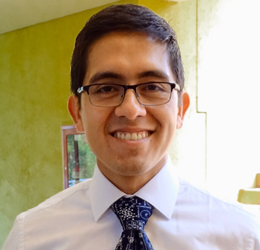Postdoctorados
Zaira M. Berdiñas
|
Línea de Investigación: Red dwarf stars, Radial Velocities, Extrasolar planets, Asteroseismology of low mass stars. Teléfono: - E-mail: berdinas[at]das.uchile.cl Supervisor: James Jenkins 2017 |
 |
Áreas de Interes I’m interested in extrasolar planets orbiting cool stars. I use the radial velocity technique that requires data from high-resolution spectrographs (e.g. HARPS-ESO). Cool stars are benchmark objects to discover Earth-mass planets orbiting in temperate orbits. Besides detecting and characterising potentially habitable exoplanets, I’m interested in the stellar physics of the host stars. In particular, I search for the first observational confirmation of a seismic signal in M-dwarf stars. Stellar pulsations are common for most spectral types but they have not been detected in M dwarfs. Among the implications, their discovery will trigger the asteroseismology theory allowing a better knowledge of the star parameters and thus constraining the parameters of the posible hosted exoplanets. I’m also part of the CARMENES consortium, a high-resolution optical-NIR spectrograph settled at the CAHA observatory aimed at monitoring 300 M-dwarf stars of the northern hemisphere to discover new exo-worlds. |
Enrico Congiu
|
Línea de Investigación: Ionized gas, interstellar medium, Star Forming Galaxies. Teléfono: - E-mail: econgiu[at]das.uchile.cl Supervisor: Guillermo Blanc 2020 |
|
Áreas de Interes I am interested in the properties of the interstellar medium in nearby star-forming galaxies. In particular, I study H II regions, their properties, and their role in galaxy evolution. These structures are fundamental in the life of a galaxy because they lie at the interface between the small-scale physics of the interstellar medium and the large-scale galactic processes. I mostly work with optical integral-field data from the PHANGS-MUSE survey, a project aimed at mapping the star-forming disk of 19 nearby (D < 20 Mpc) star-forming galaxies with MUSE. Currently, I am developing a new algorithm to reliably classify emission-line nebulae using the complete spectral and spatial information obtained from MUSE data, a fundamental step to build a catalog of H II regions with as few contaminants as possible. Then, I will use this catalog to investigate the biases in measuring the metallicity of H II regions (and star-forming galaxies in general) that are probably causing what is known as the Abundancy Discrepancy Factor. |
Jixing Ge
|
Línea de Investigación: Formación Estelar, Astrobiología. Teléfono: 56 (2) 2 977 1143 E-mail: jge[at]das.uchile.cl Supervisor: Diego Mardones 2018 |
 |
Áreas de Interes My research in plan: 1.- Improve our gas-grain model to include more realistic processes and try to establish Monte Cario gas-grain model for the purpose to study microscopic grain surface processes. 2.- Design observations to verify the chemical effects caused by turbulent dust grain motions. 3.- Use our chemical model to explain the chemical abundances in star-formation regions. 4.- Carry out MHD simulation study of turbulent grain dynamics with co-authors (important for grain chemistry). 5.- The isotopic chemistry of D, 13C, 15N and 18O. |
Venu Kalari
|
Línea de Investigación: Star formation. Teléfono: 56 (2) 2 977 1111 E-mail: vkalari@das.uchile.cl Supervisor: Mónica Rubio 2016 |
 |
Áreas de Interes Do the properties of stars forming in dense, massive star-forming regions differ from those in nearby low-mass star forming regions? I aim to put constraints on the differences in their properties using multi-wavelength observations of star-forming regions in the Milky Way, and extra-Galactic systems. |
Manuel Merello
|
Línea de Investigación: -. Teléfono: - E-mail: - Supervisor: Leonardo Bronfmann 2020 |
|
Áreas de Interes - |
Felipe Santana
|
Línea de Investigación: Poblaciones Estelares. Teléfono: 56 (2) 2 977 1133 E-mail: fsantana[at]das.uchile.cl Supervisor: Ricardo Muñoz 2016 |
 |
Áreas de Interes . |
Anibal Sierra
|
Línea de Investigación: Protoplanetary disks. Teléfono: - E-mail: asierra[at]das.uchile.cl Supervisor: Laura Perez 2020 |
 |
Áreas de Interes I study the dust and gas properties in protoplanetary disks from a theoretical point of view in order to explain interferometric observations. I am specially interested in disks with vortex and/or rings structures where dust grains can be trapped and grow. My work has focused on the analysis of continuum dust emission at millimeter wavelengths (ALMA, VLA) taking into account the scattering effects. From these analysis, the dust surface density, temperature, and the size of the dust grains can be determined from the multi-wavelength observations. Once the dust properties are determined, I have used simple analytical models including dust trapping in vortices and rings in order to explain the inferred structures. |






